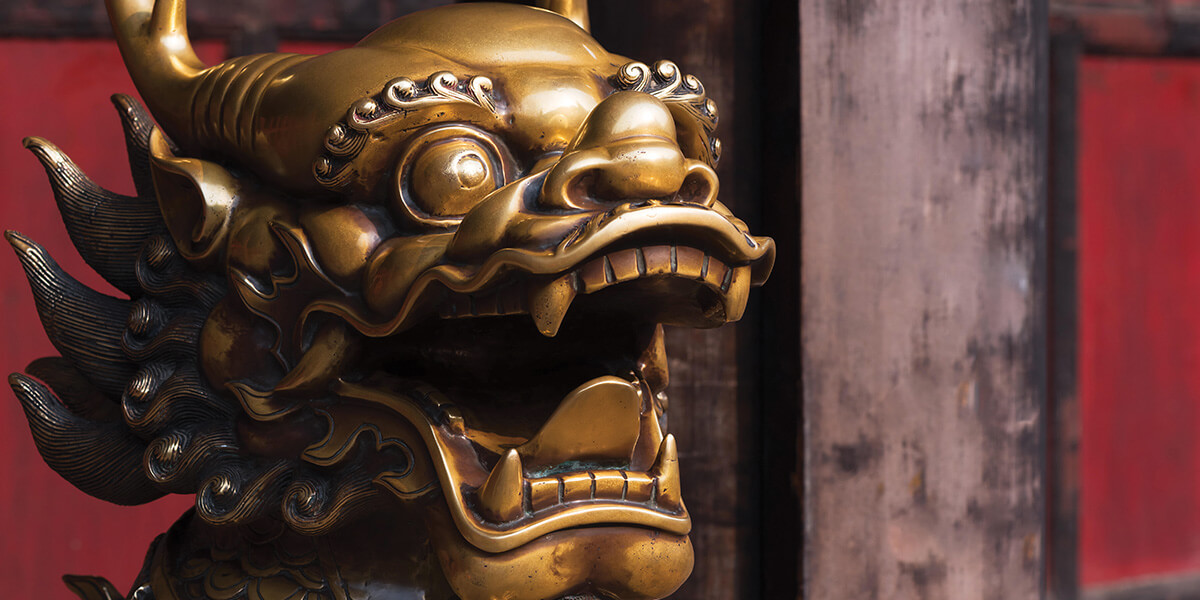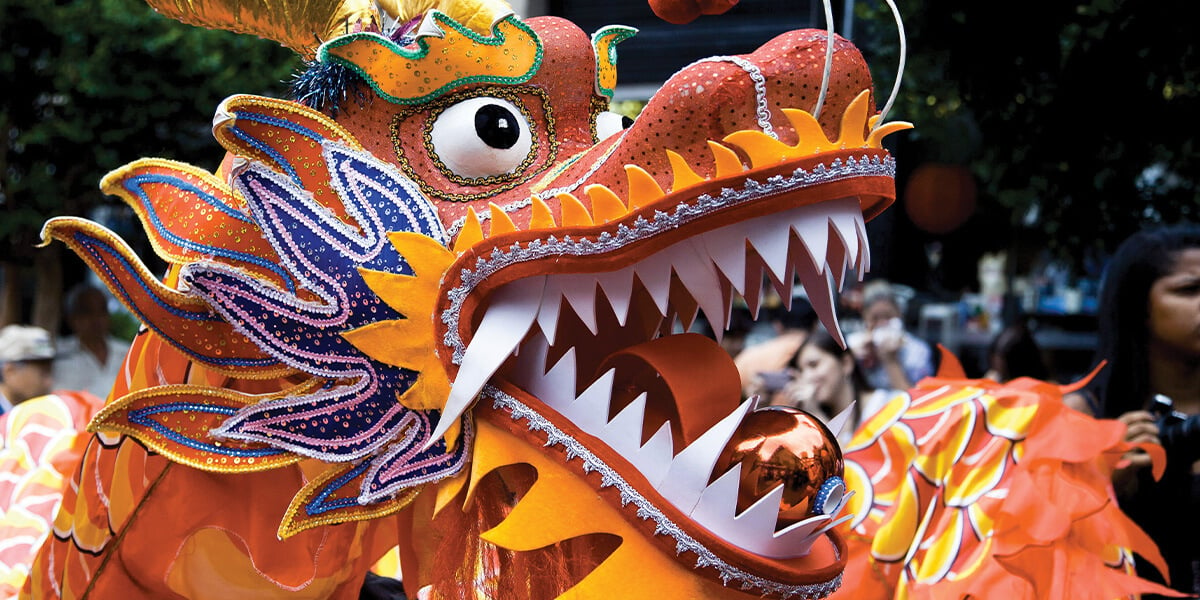The dragon is the fifth animal in the zodiac cycle and is considered China’s most important cultural symbol. Seen as possessing magical powers, the Chinese dragon is much more benevolent than the fire-breathing monsters of Western culture. Wise and powerful, the dragon symbolises courage, confidence and adventurousness, whilst being seen to represent success and ambition. Consequently, people born in the Year of the Dragon are thought to possess many of these traits. Famous people born under this zodiac sign include the naturalist Charles Darwin, two-time British Prime Minister Harold Wilson, founder member of the Beatles John Lennon, singer Tom Jones, and the actor Benedict Cumberbatch.

A Mythical Creature
The dragon is the only mythical zodiac animal, and it combines the characteristics of nine different creatures. It has the horns of a deer, the head of a camel, the eyes of a rabbit, the ears of an ox, a snake’s neck, a belly of a clam-monster, fish-like scales, eagle claws and the palms of a tiger.
A Proud Emblem
The dragon’s spiritual significance can be traced back to the Neolithic Age more than 5,000 years ago. China became more united during the reign of Huangdi (2717–2599 BC). Known as the Yellow Emperor, he united many of China’s original tribes, combining elements of their symbolism as one new totem – the dragon. This marked the start of the unification of Chinese civilisation, which explains why Chinese people refer to themselves as ‘Descendants of the Dragon’. Over time the dragon has come to represent the spirit of the Chinese people, which is strongly associated with innovation, independence and enterprise, and it is celebrated throughout Chinese art and culture.
Dragon Art
There is a long-established tradition of celebrating the dragon through art. Whether they are expressed in the form of carvings, paintings, or costumes, dragons are usually depicted dynamically. Strong and unyielding, these interpretations reflect the indomitable qualities of the dragons of myth and legend.
This proud national emblem is also celebrated through Dragon Dances, which are an important part of many Chinese festivals, including New Year. Of all the parades that take place throughout the New Year festivities, the Chinese Dragon Parade is the highlight. Costumes consist of a large head and a tail-like body in sections which are lifted on poles. Customarily performed along with lion dancers, acrobats and martial artists to the sound of drums and horns, the parade ends in a burst of firecrackers.

Lords of Water
Chinese dragons are supposed to control watery phenomena. According to folklore, they might use this power to summon rain during a drought. This association with water can also be seen at the annual Dragon Boat Festival that takes place across China. This ancient sport involves racing brightly coloured boats decorated with dragon heads and long tails carved from wood.
Traditional Customs
The dragon features prominently in many traditional Chinese customs. During the second month of the lunar calendar, it is traditional to eat noodles that resemble the dragon’s facial hair for example. There are also many popular sayings that are connected to the dragon. The leading company in an industry is described as the ‘dragon head enterprise,’ reflecting its size and status, whilst the expression ‘fish jump over the Dragon Gate’ is used to describe someone getting a place at a good university or securing a life-changing job.
According to Chinese mythology, the Dragon’s Gate is located at the top of a waterfall cascading from a legendary mountain. Carp swim upstream against the current, but only a few make the final leap over the waterfall. It is said that if a carp successfully makes the jump, it is transformed into a dragon. The image of a carp jumping over Dragon’s Gate is an old and enduring Chinese cultural symbol for courage, perseverance and accomplishment.
Imperial Power
Ancient Chinese emperors described themselves as sons of the dragon god and used its symbolism to underscore their authority. One of the most spectacular examples of this association is the Nine-Dragon Wall found at the Forbidden City in Beijing. Use of dragon motifs was strictly reserved for the royal family who often used dragon patterns on their clothing, and even today the dragon is still associated with imperial power.
